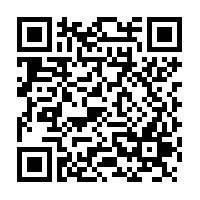Stinging Nettle Leaves Fine Organic - Herbal Collection
Stinging Nettle Leaves Fine Organic - Herbal Collection - 100 gr is backordered and will ship as soon as it is back in stock.
Description
Description
Stinging Nettle Leaves Fine Organic (Urtica dioica) are nutrient-rich, naturally dried leaves valued for their use in herbal teas, cooking, and natural wellness routines.
Packed with vitamins and minerals, these leaves support daily vitality and are free from additives—perfect for infusions, soups, and culinary blends
TRADITIONALLY USED FOR
Nettle Tincture (Liquid Herbal Extract)
- Rapid-acting form for systemic support
- Used to relieve hay fever/allergies, support joints, relieve arthritis pain, and improve prostate and urinary health
- Directions: 1–2 ml (20–40 drops) in water, 2–3 times/day before meals
- Best for: Allergy attacks, joint pain flare-ups, fast absorption needs
Nettle Dried Herb
- Infusion or tea for ongoing routine wellness
- Brewed tea or added to soups/smoothies for inflammation management, mild allergies, urinary tract support, skin health, and gentle daily cleansing
- Directions: 2–4 g per cup (1 heaped tsp), steep in boiled water 10–15 min, drink up to 3x/day
- Can be used topically as a rinse for scalp/hair or skin
- Best for: DIY herbalists, gentle daily support, food and topical infusion
Vegan Capsule (Nettle Herb)
- Convenient, on-the-go routine support
- Provides the full spectrum of nettle’s leaf and stem nutrients for seasonal allergies, joint health, circulation, immune and energy support
- Directions: 300–600 mg extract or powder, 1–3x daily or as recommended
- Best for: Busy lifestyles, travelers, those who dislike tea or tincture taste
Vegan Capsule (Nettle Root)
- Focused men’s health support
- Root extract is used for urinary function, prostate health/BPH, hair vitality, hormone balance, and kidney support
- Directions: 300–600 mg root extract/capsule, 1–3x/day
- Best for: Men’s prostate/urinary concerns, hair loss/androgen balance, BPH symptom management
Nettle Product Recap Table
| Product Type | Main Benefits | Typical Use & Dosage | Best For | Not For |
|---|---|---|---|---|
| Tincture | Allergy, joint, anti-inflammatory, prostate, detox | 1–2 ml in water, 2–3x daily | Acute relief, quick-absorb | Pregnancy, severe kidney/heart, kids |
| Dried Herb | Tea for daily immune, allergy, detox, skin, UTI | 2–4 g/cup infused, 1–3x daily as tea/food | Everyday use, DIY home blends | As above |
| Vegan Capsule Herb | All-round support—immunity, joint, energy, allergy | 300–600 mg 1–3x daily | Busy schedules, travel, vegans | Under 12, pregnancy, allergy to nettle |
| Vegan Capsule Root | Men’s health—prostate, BPH, & hair | 300–600 mg 1–3x daily | Men’s urinary & prostate focus | As above, plus women seeking leaf benefits |
Quick Facts & Cautions
- Nettle is rich in vitamins A, C, K, iron, calcium, magnesium, and potent antioxidants
- Avoid during pregnancy/breastfeeding unless supervised
- Possible mild stomach upset or allergies in sensitive individuals; rare drug interactions: consult if on diuretics, blood thinners, diabetes, or blood pressure meds
- Store capsules and dried herbs airtight in a cool, dry place
INFORMATION
Stinging Nettle (Urtica dioica)
INCI Name: URTICA DIOICA LEAF EXTRACT
CAS Number: 84012-40-8
EC Number: 281-685-5
Stinging nettle (Urtica dioica) is a versatile perennial herb renowned for its nutritional value and medicinal properties.
Native to Europe, Asia, and North America, this plant has been used for centuries in traditional medicine and as a food source.
Active Compounds
Stinging nettle contains a variety of bioactive compounds, including:
- Flavonoids (quercetin, kaempferol)
- Phenolic acids
- Carotenoids
- Essential fatty acids
- Vitamins (A, C, K, B complex)
- Minerals (iron, calcium, magnesium, potassium)
- Chlorophyll
- Lectins
- Polysaccharides
Properties
Stinging nettle offers numerous health benefits:
- Anti-inflammatory: Helps reduce inflammation in conditions like arthritis
- Antioxidant: Protects cells from oxidative stress
- Diuretic: Promotes urine production and detoxification
- Analgesic: Provides pain relief
- Antiallergic: May help alleviate allergy symptoms
- Hypotensive: Potential to lower blood pressure
- Antidiabetic: May help regulate blood sugar levels
Preparation
Harvest young leaves before the plant flowers for optimal potency. Wear gloves to avoid stings. The plant can be used in various forms:
- Tea: Steep dried leaves in hot water for 5-10 minutes
- Tincture: Macerate fresh or dried herb in alcohol
- Capsules: Filled with dried, powdered herb
Topical preparations: Creams or ointments for external use
Usage and Dosage
- Tea: 1-2 teaspoons of dried herb per cup, up to 3 times daily
- Tincture: 2-4 ml, 3 times daily
- Capsules: 300-500 mg, 3 times daily
Always consult a healthcare professional before starting any herbal regimen.
Precautions
- May interact with blood thinners, diuretics, and diabetes medications
- Not recommended during pregnancy without medical supervision
- Can cause mild gastrointestinal upset in some individuals
- Handle fresh plants with care to avoid stings
CAUTION
in a cool, dry place, away from light. Keep tightly closed, away from the reach of Children and pets.
Do not exceed the daily dose.
This product is not intended to prevent or cure any form of illness or disease.
If you are pregnant or nursing ; If you have a medical condition or are in the course of medical treatment ; If you are programmed for theater/operation in the near future, please consult your healthcare practitioner before using this product.
This product cannot replace a varied and balanced diet and a healthy lifestyle.
This product has not been evaluated by the SAHPRA for its quality, safety or intended use.
For More Information please check our General Safety Herbal products Page






